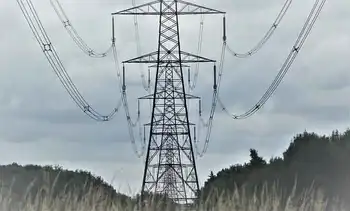Green dollars moving to smart grid, energy storage
By Reuters
CSA Z462 Arc Flash Training - Electrical Safety Essentials
Our customized live online or in‑person group training can be delivered to your staff at your location.

- Live Online
- 6 hours Instructor-led
- Group Training Available
Investment is seen shifting from capital-intensive energy generating technologies, such as solar and wind, to those associated with energy storage, transportation and efficiency.
Bets are being placed on lithium-ion battery makers and startups in the smart grid sector that offer a range of possibilities from helping electric utilities operate systems more efficiently to enabling consumers to control energy use.
Smart grid technologies aim to make the existing power grid more efficient and reliable.
"Six to nine months ago, people were putting the brakes on everything," said Gary Vollen, managing director of Robert W Baird & Co's clean technology investment banking. "I don't think we are in that condition these days."
Industry experts and company executives are expecting the appetite for investments in green technologies, sometimes referred to as cleantech, to see a significant pickup as early as this fall, with continued improvement through 2010.
But they caution that the level of activity is unlikely to reach the $2.6 billion peak seen in the third quarter of 2008.
"I would expect to see a meaningful increase in cleantech investment over the course of the next six months," said Tim Carey, head of PriceWaterHouseCoopers' clean technology group. "Will they return to levels that we saw in 2007, 2008? I am not so sure about that."
Aggressive stimulus from the U.S. government's Department of Energy (DOE), which has pledged nearly $100 billion for a wide variety of green technology spending, is also providing a big boost.
"There's a lot of excitement about money coming out of DOE," Carey said.
While the government has announced grants and loans, the money is still making its way to the companies.
Overall, green technology venture investments rose 73 percent to $572 million in April to June from the previous quarter, according to a study by Ernst & Young.
Analysts said there was a lot more money on the sidelines waiting for an opportunity to jump in when the economy brightens.
"If the companies can hold on, can stay through this curve, then there will be lots of funding available," said Awais Khan, director of venture capital practice at KPMG.
Some big institutions are already braving the risks.
Calpers, the largest U.S. pension fund, revealed this week that it committed $60 million to prominent Silicon Valley-based Khosla Ventures in June for a new seed-stage fund that will primarily focus on green companies.
Green technology companies — which include everything from renewable energy, electric vehicles and energy storage to effective transmission of power — had seen record number of dollars come their way in 2007 and 2008 on heightened worries about global warming and soaring oil prices.
But investments dried up last year as oil prices tumbled from their July 2008 peak of $147 per barrel and the U.S. economy slipped into a recession.
Solar companies, which had cornered a majority of green investments in the past, were the hardest hit by the economic downturn. Solar venture investments hit a three-year low in the second quarter, according to a joint study by the Cleantech Group, which tracks the market, and accounting firm Deloitte.
Vollen of Robert W Baird & Co said investors now are more interested in technology that was less capital intensive, such as those associated with the smart grid infrastructure and energy efficiency.
"Everybody still recognizes that energy storage is the holy grail of the sector," he added.
Inventing less costly ways to store energy has so far been a stumbling block toward widespread use of renewable energy.
That quest helped lithium-ion battery maker A123 Systems attract $69 million last quarter to expand battery manufacturing, while residential smart grid company Tendril attracted $30 million in June. Energy efficiency company CPower and Grid Net, which builds software for smart meters, also were successful in raising money.
Some companies like A123 Systems and biotech firm Codexis are actively monitoring the markets to launch their initial public offerings.
Drew Clark, director of strategy at IBM's Venture Capital Group, said he spends about 90 percent of his time assessing opportunities in the smart grid space.
"VCs, in this era of illiquidity, have been looking for lower capex cost plays in cleantech," said Clark, who partners with about 120 venture capital firms to help IBM identify promising technologies. "Plays that are more like a software kind of play. You want something that takes a few smart people and very little equipment, and produces a Facebook."
Facebook, created five years ago in a Harvard dorm room, is now the world's largest Internet social networking company with more than 250 million registered users.











